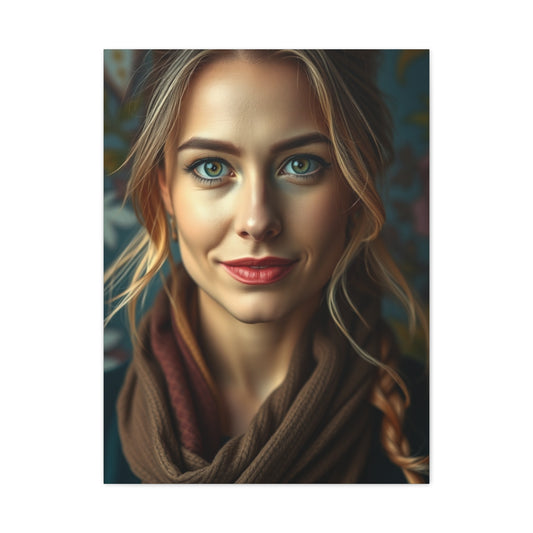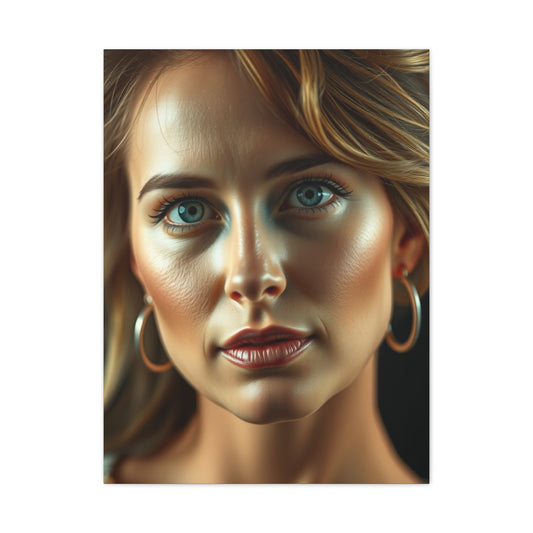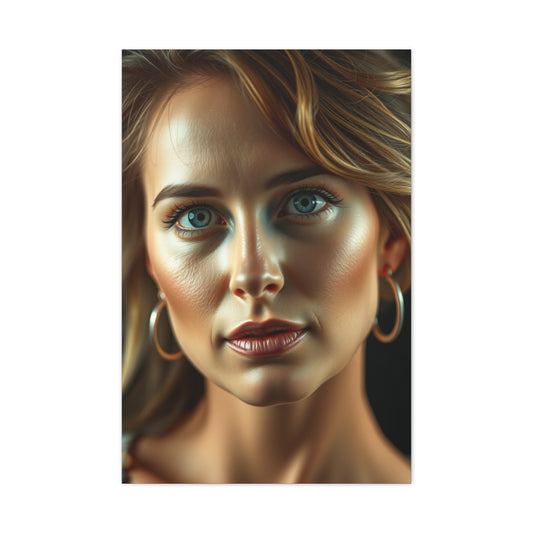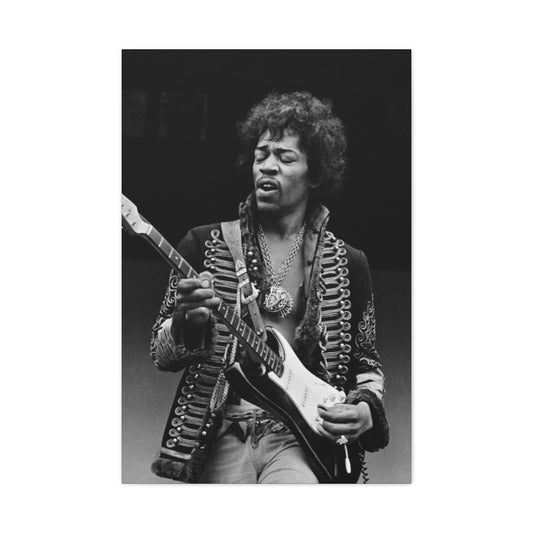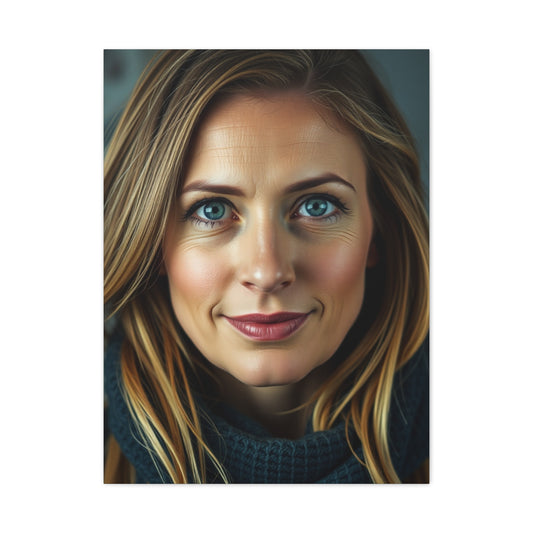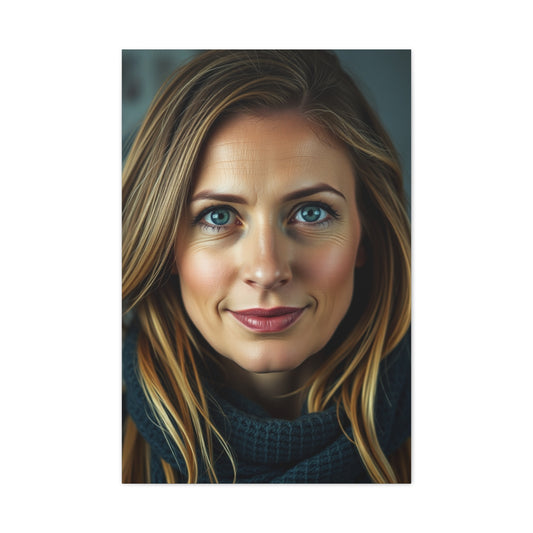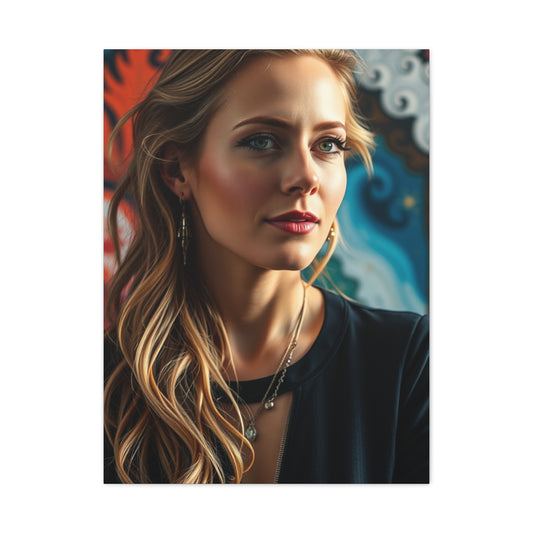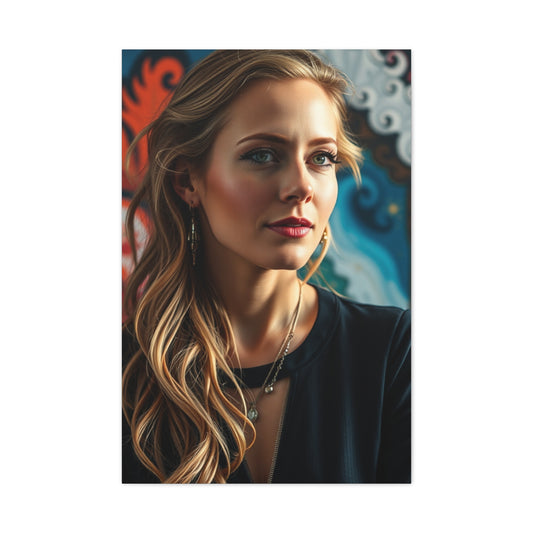Rediscovering Tradition with a Modern Touch: The Rise of Water-Mixable Oil Painting
For centuries, oil painting has captivated the art world with its tactile richness, vivid color, and slow, deliberate application. It has graced everything from Renaissance masterpieces to modern realist works, firmly rooting itself in the traditions of fine art. The sensory experiencewhether it's the scent of linseed oil wafting through the studio or the luxurious feel of thick paint beneath a brushhas long made oil painting a cherished medium among artists. However, as the realities of modern life bring heightened awareness of health and environmental impacts, a new wave of innovation has entered the art materials scene. This shift is particularly apparent in the evolution of solvent-free painting solutions, leading to the emergence of water-mixable oil paints.
One of the most notable advancements in this realm is the development of Georgian Water-Mixable Oil Colours. These paints represent a harmonious blend of heritage and innovation, offering artists an experience rooted in the tactile joys of traditional oils without the reliance on hazardous solvents like turpentine or mineral spirits. This transformation is not only a technical leap but a philosophical one, proposing that artists need not sacrifice authenticity for safety. With water as the primary solvent, this medium allows for a cleaner, safer painting process, making it an ideal choice for artists working in confined studio spaces or in educational settings where ventilation may be inadequate.
The beauty of these paints lies not only in their practicality but in their unwavering dedication to quality. Georgian Water-Mixable Oils mimic the buttery consistency, vibrant saturation, and slow-drying nature of classic oils. This means artists can continue to enjoy the impasto effects, blending techniques, and color depth they have come to associate with traditional oils, all while minimizing their exposure to toxins. By embracing these paints, creators find themselves at the intersection of centuries-old technique and contemporary responsibility place where the past and future coexist on the same canvas.
Related Catagories:
|
Alice in Wonderland Characters Wall Art Canvas Pictures Prints |
Exploring Artistic Freedom Through Versatility, Performance, and Sustainability
What sets Georgian Water-Mixable Oil Colours apart in today’s crowded art supply market is their remarkable adaptability and technical prowess. These paints are crafted with a high pigment concentration, ensuring bold, luminous colors whether used directly from the tube or thinned with water. Unlike acrylics, which often lack the nuanced depth of oil, or watercolors, which require a different skill set altogether, water-mixable oils sit in a unique position: versatile enough to cross stylistic boundaries, yet authentic enough to retain their oil-based integrity.
When diluted, these paints can achieve the soft transparency of watercolor or the fluid texture of gouache, offering artists a palette of creative opportunities. This cross-medium potential is particularly valuable in today’s artistic climate, where experimentation is encouraged and hybrid techniques are celebrated. Artists can easily transition between stylesglazing, scumbling, layering, or wet-on-wet within a single medium. For those who traditionally avoid oils due to the demanding cleanup and health risks, this is a liberating development.
Durability is another cornerstone of the Georgian range. With outstanding lightfastness ratings across their palette, these paints are designed to endure. Whether an artwork is destined for a gallery wall, a collector’s home, or an outdoor mural, artists can rest assured that the hues they’ve so meticulously chosen will remain vibrant for decades to come. This permanence is especially crucial in today’s fast-paced global art market, where pieces often travel long distances and must withstand varying environmental conditions.
Drying time, a common concern among oil painters, finds a perfect middle ground in this formulation. Georgian Water-Mixable Oils typically surface-dry within five to seven dayslong enough to allow blending and adjustments, yet efficient enough to suit the demands of professional schedules. This timeframe supports both contemplative studio work and production-based projects, making the medium equally attractive to fine artists, illustrators, and art educators.
Furthermore, these paints align with the broader global movement toward eco-conscious living. By eliminating the need for turpentine and mineral spirits, artists reduce their exposure to volatile organic compounds (VOCs) and contribute to a healthier studio environment. This is particularly impactful in shared or enclosed spaces, where air quality is a legitimate concern. Artists working at home, in schools, or in community centers can paint freely without worrying about long-term exposure to harmful fumes. Such benefits are not only practical but deeply humanizing, placing the well-being of the artist on par with the beauty of their creations.
Reimagining the Future of Oil Painting with Purpose and Poise
The advent of water-mixable oils is more than a technical adjustment; it’s a cultural shift that redefines what it means to be a painter in the 21st century. With Georgian Water-Mixable Oil Colours, artists are no longer forced to choose between tradition and innovation. Instead, they are invited to embrace a new era of painting that is as rooted in artistic heritage as it is attuned to modern values.
This medium offers more than convenience. It becomes a tool for storytelling that stretches across generations. With each brushstroke, an artist can channel the meticulous layering techniques of Jan van Eyck or the bold impasto of Van Gogh while also expressing contemporary concerns like environmental stewardship and studio safety. In this way, the medium is as much a dialogue with the past as it is a statement of present intentions and future aspirations.
Philosophically, Georgian Water-Mixable Oils underscore an essential truth: progress in art materials doesn’t imply a rejection of the past but a thoughtful enhancement of it. These paints distill centuries of experimentation, observation, and mastery into a form that aligns with the contemporary artist’s lifestyle. They reflect the evolving values of the art world, where sustainability, wellness, and accessibility are just as important as visual impact and technical excellence.
For educators and emerging artists, this is especially meaningful. Young painters can learn oil techniques without being introduced to harmful chemicals, and experienced professionals can enjoy their practice without compromising their health. This inclusivity opens doors, creating a more diverse and dynamic community of oil painters who are free to explore, innovate, and express themselves without constraint.
The journey of oil painting is far from over. With the introduction and growing popularity of Georgian Water-Mixable Oil Colours, the narrative evolvesnot by erasing what came before, but by expanding the possibilities. These paints serve as a bridge between centuries of tradition and a forward-thinking artistic future, embodying the idea that true mastery includes both reverence for the old and courage to embrace the new.
In an era where every choiceartistic or otherwisecarries implications for both personal and planetary health, choosing a medium like Georgian Water-Mixable Oils represents more than a stylistic decision. It is a commitment to responsible artistry, one that recognizes the interconnectedness of creativity, safety, and sustainability. Through these paints, artists are not just preserving the legacy of oil paintingthey are ensuring its continued relevance for generations to come.
Reimagining Oil Painting: The Rise of Georgian Water-Mixable Oils
Oil painting has long captivated artists with its depth, richness, and timeless appeal. Its history is a chronicle of masterworks and meticulous craftsmanship, but it is also a story of ongoing evolution. Traditional oil paints, while beloved for their chromatic intensity and texture, come with notable challenges: lengthy drying times, reliance on harsh chemical solvents, and environmental concerns. Georgian Water-Mixable Oils are an innovative answer to these issues. They preserve the luxurious qualities of classical oils while eliminating the need for toxic thinners, marking a progressive leap in artistic materials. This new generation of oil colours aligns heritage with health-conscious, modern practice, creating a more inclusive and sustainable path forward for painters of all levels.
The breakthrough behind Georgian Water-Mixable Oils lies in a refined chemistry that allows water to seamlessly integrate into an oil-based medium. This is accomplished through the use of specially modified linseed oils that exhibit amphiphilic properties rare capacity to bond with both oil and water. Traditional oil paints, by contrast, repel water due to their hydrophobic nature. The innovation here doesn't lie in simply making oil paints "water-friendly" but in doing so without compromising texture, pigment integrity, or artistic fidelity. This delicate balancing act, achieved through molecular adjustments, grants artists the flexibility to use water as a diluent or cleaning agent while maintaining the feel and behavior of traditional oil paints.
When dispensed onto a palette, Georgian Water-Mixable Oils reveal a robust consistency that holds its shape yet remains easy to manipulate. Their viscosity allows for a luxurious application experience, whether you're working with brushes or palette knives. The paint glides with controlled fluidity, offering the tactile response artists expect from oil without the greasy residue or solvent fumes. This replication of the traditional oil painting experience isn’t coincidental; it’s the result of extensive formulation and testing to ensure artists don’t sacrifice any expressive capability.
An important aspect of these paints is their high pigment concentration. Each color is infused with a richness that maintains saturation and depth across various techniques. Whether applied in thick, dramatic strokes or diluted into transparent layers, the vibrancy remains consistent and luminous. Many water-mixable alternatives suffer from pigment dilution, leading to flat, uninspired results, but Georgian Water-Mixable Oils defy that trend. Their ability to hold onto pigment strength makes them not just a practical solution but also a visually rewarding one. The final artwork maintains its radiance through the drying process and beyond, making these paints especially suitable for works intended for exhibition or sale.
Fluid Versatility and the Expansion of Artistic Possibility
One of the defining characteristics of Georgian Water-Mixable Oils is their adaptability. These paints are engineered to perform across a wide spectrum of techniques and styles. Artists can transition effortlessly from thick impastos that build dramatic texture to delicate, translucent washes reminiscent of watercolor or ink. When thinned with water, the paint relinquishes its opacity and invites light to pass through, giving rise to luminous, layered effects. This versatility fosters an interdisciplinary approach to painting experience where oil, watercolor, and gouache techniques can coexist within the same canvas.
This fluid range of expression encourages a freedom that traditional oils rarely offer. In standard oil painting, the use of solvents like turpentine or mineral spirits is often necessary to create glazes or control flow. These substances, though effective, carry strong odors and health risks. By eliminating the need for such chemicals, water-mixable oils open up the process to more spontaneous experimentation. Whether you’re layering vibrant underpaintings or delicately feathering transitions between tones, the medium responds with grace and control.
Another subtle but significant advantage is the drying time. Georgian Water-Mixable Oils typically dry to the touch in a five-to-seven-day window that offers a perfect balance between working time and progress. Unlike acrylics, which can dry within minutes and limit reworking, or traditional oils, which may remain tacky for weeks, this moderate drying period supports more complex compositions. Artists can return to their work the next day, or even days later, to adjust, glaze, or refine areas without disturbing underlying layers. This flexibility is especially valuable for portrait artists, still life painters, or those working in alla prima and wet-on-wet styles.
In shared or educational environments, this balance of time and safety becomes even more important. The absence of volatile organic compounds (VOCs) and solvent fumes transforms classrooms and studios into healthier spaces. Young or inexperienced artists can immerse themselves in the oil painting tradition without worrying about chemical exposure or disposal logistics. This not only makes the medium more accessible but also nurtures a responsible artistic culture where safety and expression coexist. For instructors, it’s a tool that bridges classical technique with modern values, ensuring that students develop skills within a supportive and eco-conscious framework.
Moreover, Georgian Water-Mixable Oils exhibit remarkable compatibility with other water-based media. Artists can integrate them with watercolor backgrounds, gouache highlights, or ink outlines, all while maintaining cohesion within a piece. They also adhere beautifully to surfaces prepared with acrylic gesso, allowing for rapid ground preparation without compromising paint adhesion. This intermaterial harmony expands creative horizons, offering painters the chance to blend traditions and push boundaries without technical setbacks.
Enduring Quality: Crafting Legacy Through Ingenuity
Durability is the final test of any fine art material. Georgian Water-Mixable Oils meet this challenge with impressive resilience. One of the most common concerns among artists is the shift in color that occurs from wet to dry. With inferior paints, this transition can lead to frustration and unpredictability. However, these oils are engineered to retain tonal consistency, allowing artists to trust that what they see during application will remain true over time. This kind of chromatic stability is essential not only for emotional expression but also for professional reliability. Whether you're painting for personal fulfillment or for the gallery wall, consistency ensures that your creative vision remains intact.
The resistance to yellowing and cracking further solidifies these paints as a long-term ally in the studio. They undergo rigorous testing to simulate years of environmental exposure, ensuring that artworks remain vibrant and structurally sound. For collectors, curators, and commercial artists, this durability is not a bonus’s a necessity. Works must stand the test of time, both aesthetically and physically. With Georgian Water-Mixable Oils, the final piece doesn’t just capture a moment of inspiration; it preserves it for generations.
There’s also an intangible but profound dimension to these paints: how they honor the hand of the artist. Every brushstroke remains visible, every gesture recorded. This tactile fidelity is part of what makes oil painting so reveredits capacity to carry not just color, but feeling. Georgian Water-Mixable Oils respect this legacy. They don’t flatten the experience or sterilize the medium in the name of convenience. Instead, they refine and elevate it, allowing the artist’s process to be fully expressed, free from health hazards or logistical constraints.
Innovation in art materials often meets skepticism, especially from purists who regard tradition as sacrosanct. But tradition is not undermined by evolution is expanded by it. These paints are not diluted imitations of oils; they are authentic enhancements forged from a deep understanding of what artists need today. They are born from science, yes, but shaped by sensitivity to artistic heritage. For artists who care not only about the outcome of their work but also about the means and methods behind it, Georgian Water-Mixable Oils offer a conscientious, inspired solution.
This shift represents more than just convenienceit embodies a new artistic ethos. One where craftsmanship and conscience intersect, and where the past and future of painting converge. As we explore the remaining parts of this series, we’ll delve further into the techniques, tools, and applications that make this medium a transformative force in the studio. The alchemy behind the medium is not merely chemicalit is creative, ethical, and enduring.
Reimagining the Studio Experience with Georgian Water-Mixable Oils
The studio is often envisioned as a sacred retreat space where creative energy finds form and artistic intuition is given free rein. It’s a domain where every material holds significance, where the tools of the trade become conduits for inspiration. Among these, the medium of paint is perhaps the most transformative, and the shift to Georgian Water-Mixable Oil Colours can be nothing short of revolutionary. These innovative oils preserve the luscious qualities of traditional oils while introducing a level of convenience and environmental consideration that modern artists increasingly demand.
One of the most immediate and liberating differences artists observe when incorporating these paints into their practice is the elimination of traditional solvents. There’s no longer a need for turpentine or mineral spirits that cloud the studio with heavy, often hazardous fumes. Instead, a simple jar of water becomes a multipurpose tool used for thinning paint, rinsing brushes, or even reviving a palette mid-session. This elemental shift lightens the atmosphere, both literally and metaphorically. The air feels clearer, the environment more serene, and the overall process becomes refreshingly straightforward.
This solvent-free workflow also reshapes how artists engage with their space. Whether working from a corner of a home studio, a shared art classroom, or a co-working creative hub, the reduced need for ventilation systems or protective gear broadens accessibility. There's no need for extractor fans whirring in the background or windows left open in winter just to counteract toxic fumes. Artists are no longer restricted to certain hours of the day or forced to work within rigid health constraints. Instead, they can paint freely, whenever inspiration strikes, without concern for discomfort or disruption.
As the physical barriers to painting are lowered, so too are the psychological ones. The absence of strong chemical odors and the simplified materials list invite a more meditative rhythm into the studio. There's a newfound fluidity between concept and execution, a more seamless transition from imagination to canvas. This fosters a deeper intimacy with the creative process itself, allowing the artist to stay immersed longer and work more intuitively.
Related Catagories:
Practical Integration into Varied Creative Practices
Georgian Water-Mixable Oils have proven themselves not only to be safe and sustainable but also surprisingly versatile. The cleanup process alone becomes a compelling reason to adopt them. Traditional oil painters often find themselves spending significant time and effort at the end of each session managing used rags, ventilating the studio, and dealing with sticky solvents. In contrast, artists using water-mixable oils can finish their work and simply wash up with soap and water. This streamlined end-of-day routine preserves both time and energytwo invaluable resources in any creative endeavor.
This ease of use extends to educational settings, where safety is paramount and time is at a premium. In schools, universities, and community workshops, instructors are increasingly turning to Georgian Water-Mixable Oils as a solution that minimizes risk while maximizing exposure to traditional oil painting techniques. Students can dive into the richness of oil without the intimidating technical and health-related learning curve. For teachers, less time is spent on hazard mitigation and more on fostering artistic growth. The curriculum becomes more focused, lessons more dynamic, and the learning environment more inclusive.
Quality is often a concern when switching mediums, especially for those with years of experience using conventional oils. But consistent feedback from professionals has dispelled many of these doubts. The paints retain the buttery texture and vivid pigmentation that oil painting is known for. Blending is smooth and intuitive, with colors maintaining their vibrancy from palette to canvas to finished work. Whether one is executing fine detail or working in sweeping, impassioned gestures, the responsiveness of the medium supports a wide array of techniques.
This flexibility becomes even more apparent when used in mixed-media work. Georgian Water-Mixable Oils can be layered over water-soluble graphite, watercolor pencil, or ink without fear of incompatibility. This opens the door for hybrid workflows that were previously restricted by the need to segregate water-based and oil-based media. Artists can sketch, shade, and underpaint with water-based tools and then bring those foundations to life with rich layers of oil color without needing to rethink their surface preparation or worry about adhesion issues.
Perhaps one of the most appreciated qualities of these oils is their balanced drying time. Unlike acrylics that often dry too quickly or traditional oils that may take days to weeks to fully cure, water-mixable oils offer a middle ground. They remain workable long enough to allow for blending and adjustments, yet dry at a pace conducive to layering and revisiting a piece within a reasonable timeframe. This is invaluable for artists who oscillate between the immediacy of alla prima and the patience of layered, detailed compositions. It supports spontaneity without sacrificing control, structure without rigidity.
Even in professional studios, some artists are experimenting with hybrid approachesstarting a painting with water-mixable oils for their base layers and switching to traditional oils for the final flourishes or varnishing. While such practices require careful testing and consideration of long-term archival quality, they highlight the paint's compatibility and resilience. It’s a testament to the thoughtful engineering behind the formulation that these paints can play a role in both contemporary and classical workflows.
Expanding Access and Enabling Artistic Freedom Anywhere
The advent of Georgian Water-Mixable Oils has had a democratizing effect on the practice of oil painting. For artists with respiratory sensitivities, allergies, or environmentally conscious principles, the barrier to entry into the world of oils has traditionally been high. These concerns often resulted in compromiseeither working in less preferred mediums or attempting to mitigate harmful effects through costly studio modifications. Now, artists previously sidelined by these limitations can rejoin the world of oil painting with full creative agency.
There’s a poetic justice in this accessibility. Art should be inclusive, and the tools used to create it should not demand physical sacrifice. The environmental benefits also extend beyond personal health. Reduced solvent use means fewer airborne toxins and less hazardous waste, making these paints a more sustainable choice for studios conscious of their ecological footprint. Artists can pursue their vision without contributing to environmental degradation, aligning their creative ethics with broader values of sustainability.
Traveling artists, in particular, are embracing the newfound portability. Without the need for flammable liquids or extensive cleanup gear, plein air painters are free to work in remote or urban environments with ease. Painting on a hilltop, beach, or busy urban café becomes more feasible without the logistical burden of transporting solvents. A compact kit with just brushes, paint, water, and a surface is enough to create masterful work on the go. This mobility reinvigorates the practice of location-based painting, reconnecting artists with the world around them and enriching their work with direct experience.
The impact of such freedom cannot be overstated. The less energy an artist spends managing tools and materials, the more they can invest in their vision. Creativity thrives when distractions are minimized and when processes align with the natural rhythm of thought and feeling. Georgian Water-Mixable Oils allow this alignment to happen with surprising grace. Whether painting a still life in a quiet studio or capturing fleeting light on a mountainside, the medium supportsnot interruptsthe moment of expression.
What emerges from all of this is more than just a functional improvement. It is a psychological shift toward confidence and clarity. When artists no longer have to question whether their health, space, or values are compromised by their practice, they paint with greater conviction. The results are often more authentic, more resonant with the personal truths artists seek to convey.
As more creatives discover the advantages of water-mixable oils, a quiet transformation is taking place across studios, classrooms, and open landscapes. Georgian Water-Mixable Oil Colours are not merely a safer alternative; they are an evolution of the medium-preserving tradition while adapting to the needs of today’s artist. With them, painting becomes not only more accessible but also more aligned with the spontaneous, mobile, and mindful ways in which artists increasingly choose to live and work.
The Living Canvas: Rediscovering Oil Painting Through Innovation
In the evolving world of fine art, the relationship between artist and medium is as intimate as it is critical. Every brushstroke, every layer of pigment is a negotiation between vision and material. With the arrival of Georgian Water-Mixable Oil Colours, artists are discovering a renewed freedom that retains the richness of traditional oils while offering a safer, more flexible process. This final chapter in our exploration takes a step beyond the technical and dives deep into the human element, voices of artists whose journeys have been transformed by this medium.
Oil painting has long stood as a cornerstone of artistic expression, revered for its depth, luminosity, and tactile luxury. Yet for many, the conventional workflow posed barriersmost notably, the reliance on harsh solvents. This challenge was not only technical but deeply personal for numerous creators. Lucia, a veteran figurative painter, represents a generation raised on traditional techniques. Over time, her sensitivity to solvents began to outweigh her love for oil painting. For her, the studio turned from sanctuary to source of anxiety. “It was always cold, even in summer,” she recalls. “Windows open, gloves on, ventilation fans humming elaborate dance with discomfort.” The introduction of Georgian Water-Mixable Oils offered her not only a practical solution but emotional relief. The paints provided a seamless continuation of her practice, maintaining the feel, saturation, and depth she valued, while eliminating the hazards she had grown to dread. The transformation was so subtle in performance that she now describes her studio as “quiet again, like a place of focus, not concern.”
That sentiment echoes through the creative community, particularly among younger artists seeking to establish their voice in increasingly complex environments. Marcus, a recent graduate of a rigorous art program, found his way to this medium through necessity. “Traditional oils were revered, but practically impossible to use in shared studios or dorm rooms,” he explains. For emerging artists, the prospect of managing toxic waste, acquiring ventilation systems, and budgeting for chemical cleaners can be daunting. Georgian Water-Mixable Oils offered Marcus an open door. “They gave me the freedom to explore, to take risks, and to paint more often without worrying about logistics. I could just... paint.”
Art Without Boundaries: Expanding Access and Enhancing Practice
The benefits of these oils are not confined to technical efficiency or material convenience. Their unique properties have sparked a resurgence in genres and approaches often constrained by traditional oil mediums. Abstract artists, for example, have praised the way these paints respond to texture, movement, and manipulation. Neela, whose work is defined by gestural layering and expansive canvases, speaks passionately about the medium’s balance between structure and adaptability. “There’s a moment when you’re working a canvas and the paint either cooperates or resists,” she says. “Georgian Water-Mixable Oils meet you in the middle. They hold texture beautifully but allow for second chances. It’s liberating.”
Plein air painters have found a new level of practicality, turning what was once a cumbersome endeavor into something far more spontaneous and mobile. Julian, an artist who paints landscapes from remote locations, used to navigate the challenges of transporting flammable materials and solvent containers across international borders. “It used to be an ordeal,” he recalls. “Now I pack my kit in a carry-on. No spills, no airport stress, no need for heavy turpentine bottles.” The streamlined process doesn’t compromise the result. On the contrary, he notes, it allows for quicker setup, safer cleanup, and uninterrupted creative flow, regardless of location.
In classrooms and educational settings, the adoption of water-mixable oils has been particularly impactful. Emily, a high school art teacher, spent years avoiding oil painting units altogether due to safety protocols and administrative red tape. Introducing these paints into her curriculum was a game-changer. “Students could finally experience what it meant to work in the richness, the nuance, the slow-drying magic without the hazards,” she explains. The result was a classroom that became a true studio space, where young artists felt empowered rather than restricted. She notes increased engagement, better portfolio development, and a more professional tone in student work, simply because the medium felt accessible and authentic.
Even mixed-media and installation artists are discovering unexpected synergies with these paints. Ana, who integrates oils into expansive environments and sculptural elements, values the psychological ease they bring to her practice. “It’s not just the smell or cleanup,” she emphasizes. “It’s knowing I’m not exposing myself or my team to toxins every day. That mental shift changes how I enter the studio. It’s calmer, more intentional.” She likens the experience to writing in a serene environment versus a chaotic one apt analogy that underscores how materials can affect not just the process, but a state of mind.
Tradition Reimagined: Where Old Techniques Meet New Horizons
Despite their innovation, Georgian Water-Mixable Oils do not position themselves as a break from tradition, but rather a sophisticated evolution of it. Their composition allows for the buttery texture, edge control, and vibrant blending long associated with oil painting. For many, the fear that something might be lost in translation has been unfounded. On the contrary, these paints often enhance the experience by removing unnecessary friction. There’s no compromise in the visual result, only an improvement in the journey to get there.
What becomes evident through these stories is the growing alignment between artistic values and broader social shifts. In an age increasingly defined by environmental awareness and personal well-being, materials that support both artistic quality and conscious practice are no longer a luxurythey are essential. Georgian Water-Mixable Oils answer this need with quiet confidence. They foster artistic growth without demanding outdated sacrifices.
They also reflect a new kind of inclusivity in the art world. By removing barriersbe they health-related, economic, or logisticalthey make oil painting viable for a wider spectrum of artists. This democratization is not about simplifying the craft, but enriching it. Emerging voices are no longer excluded by circumstance, and seasoned professionals are not forced to choose between passion and safety. Across demographics and disciplines, these paints are creating continuity where there was once interruption.
In a digital era where much of the creative process is filtered through screens and software, the tactile ritual of painting holds deeper value than ever. To mix color by hand, to manipulate light and surface with a brush, to step back from a canvas and see one’s gesture held in pigmentthese remain elemental to the human impulse to create. Georgian Water-Mixable Oils preserve that sanctity while updating the framework around it. They allow the modern artist to engage fully, authentically, and sustainably.
In reflecting on this series and the many artists who shared their journeys, one truth stands clear: this medium is not simply a workaround or alternative, is a thoughtful refinement. It honors the heritage of oil painting while carving paths into contemporary expression. It acknowledges that tools evolve just as artists do, and that sometimes, the smallest innovations create the largest waves.
For every artist who has faced a closed window, a crowded studio, a safety warning, or a hesitant student, Georgian Water-Mixable Oils offer not just a solution, but a renewed invitation to the easel. They are, at their core, an affirmation that the evolution of art is not just in the image but in the method, the material, and the moment of making itself.










